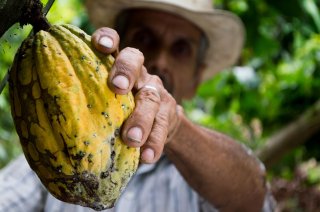
category_news
International instruments on ABS: CBD, Nagoya Protocol and EU regulations
The Nagoya Protocol is probably the best-known instrument addressing Access and Benefit-sharing (ABS), but it is not the only one. In this article, we take a look at the Convention on Biological Diversity (CBD), the Nagoya Protocol and EU regulations on ABS.
Convention on Biological Diversity (CBD)
The Convention on Biological Diversity (CBD) is the first global agreement to cover all aspects of biological diversity: the conservation of biological diversity, the sustainable use of its components and the fair and equitable sharing of the benefits arising out of the utilisation of genetic resources. Entering into force in December 1993, the CBD recognises that genetic resources are no longer considered a ‘heritage of mankind’ and that all Member States have sovereign rights over their natural resources, which provides a basis for national ABS legislation.
Article 15 of the CBD in particular confirms that national governments have the authority to grant access to the country’s genetic resources and determine conditions for accessing genetic resources: access shall be on mutually agreed terms (MAT) and is subject to prior informed consent (PIC) of the provider country, unless otherwise determined by that country.
Following the CBD’s entry into force in 1993, many countries introduced national ABS legislation. However, these national ABS rules differed from country to country, were often unclear and complex, and enforcement was difficult.
Nagoya Protocol
To further elaborate on the ABS provisions of the CBD, the Nagoya Protocol on Access to Genetic Resources and the Fair and Equitable Sharing of Benefits arising from their Utilization entered into force on 12 October 2014. It is aimed at providing a transparent legal framework for ABS, requiring provider countries to ensure clear and transparent procedures for access to their genetic resources and countries where the genetic resources are utilised to monitor compliance with ABS rules of the provider countries.
EU ABS instruments
Within the European Union, the compliance aspect of the Nagoya Protocol is implemented by the EU ABS Regulation (Regulation (EU) 511/2014), which entered entering into force on 12 October 2014. The regulation is legally binding, and contains obligations for users of genetic resources and associated traditional knowledge in the EU and for governments of EU Member States. Member States may have additional ABS legislation, for example on access to genetic resources.
The Regulation applies to genetic resources that are/were 1) accessed from 12 October 2014 onwards; 2) accessed from a country that is a Party to the Nagoya Protocol and has established applicable access measures; and 3) utilised within the EU. When activities with genetic resources are covered by an EU-recognised specialised ABS instrument, they are outside the scope of the EU ABS Regulation.
The Commission Implementing Regulation (EU) 2015/1866, which came into force in 2015, elaborates on specific provisions of the EU ABS Regulation. Most importantly, it gives information on the EU register of collections, due diligence declarations and recognised best practices.
To help users understand their obligations under the EU ABS Regulation, the EU Guidance was published in 2016 and revised in 2021. It contains detailed information and practical examples on the scope and user obligations of the EU ABS Regulation. Annex II in particular provides specific guidance on when activities with genetic resources are considered to be utilisation in the meaning of the EU ABS Regulation.
Specialised international ABS instruments
In addition to the instruments and regulations discussed above, there are also specialised international ABS instruments. The EU currently recognises two specialised ABS instruments: the ITPGRFA (International Treaty on Plant Genetic Resources for Food and Agriculture), which covers over sixty food crops and forages; and the Pandemic Influenza Preparedness (PIP) Framework, which covers influenza viruses with human pandemic potential.
Additional specialised ABS instruments are currently being developed for digital sequence information (DSI), marine biological diversity in areas beyond national jurisdiction (BBNJ) and pathogens with human pandemic potential (Pathogen Access and Benefit-Sharing System, PABS). It is expected that the Multilateral System of the ITPGRFA will expand to include additional crops.
The specialised ABS instruments will be discussed more in-depth in a series of ABS Focal Point articles.
